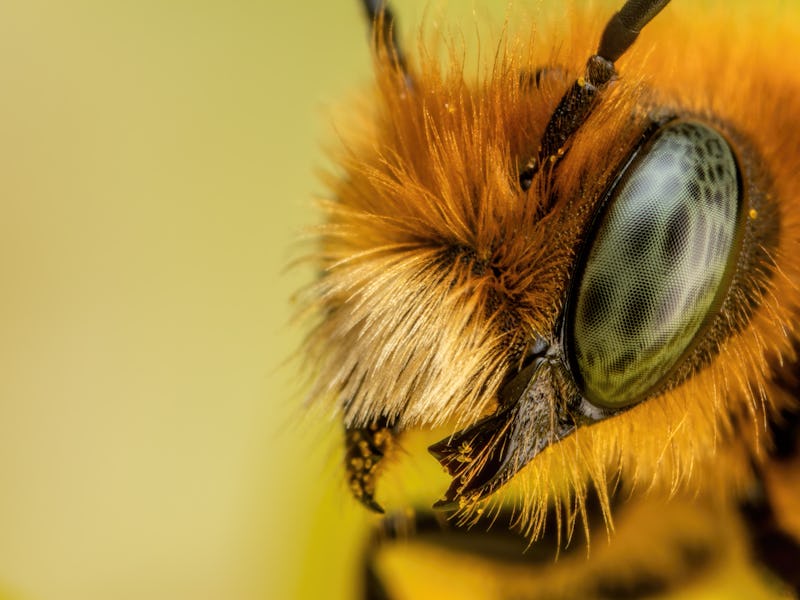A critical creature for human survival is rapidly declining
This is not good.

You depend on bees. Bees pollinate all of our staple food crops — that deli sandwich you’re eating? Thank bees for the bread flour. Oh, and the slaw too. And the cold cuts or the cheese (bees pollinate the food crops that cows, pigs, and other animals eat, too). But this critical creature is declining — fast.
The discovery — In a study published earlier this year in the journal Cell Press reports that 25 percent of known bee species have disappeared from the public record over the last 30 years.
Inverse is counting down the 20 most WTF science discoveries of 2021. This is #13. See the full list here.
If you feel like you’ve heard this one before — bees are declining, save bees — then allow us to take it a step further. Older research showings big drops in bee numbers also tend to focus on one region or species. American honeybees are particularly popular research subjects, for example. But this report argues there is a global decline in wild bee populations.
The paper lays out two massive problems:
- The total number of bee species has declined since the 1990s overall.
- There has been a 25 percent drop in recorded bee species between 2006-2015 compared to before the 1990s.
Wild bee species are in serious decline no matter where you look on Earth.
How the discovery was made — Researchers scoured bee data collected by the Global Biodiversity Information Facility — the data spans everything from museum archives to people taking pictures with their phones and sending them to citizen science projects.
“Figuring out which species are living where and how each population is doing using complex aggregated datasets can be very messy,” explained first author Eduardo Zattara in a statement. Zattara is a biologist affiliated with the National University of Comahue in Argentina.
“We wanted to ask a simpler question: what species have been recorded, anywhere in the world, in a given period?”
Zattara and his team hypothesized that if there were a global bee decline, they would see a drop in the total number of bee species being recorded in the database. And indeed, there was a drop in species recordings everywhere but Oceania, a region that includes Australia, New Zealand, and Polynesia.
The drop isn’t uniform across the globe or as devastating across the species, either. According to the study, halictid bees — the second most common bee family — have declined in number by 17 percent, while the far rarer Melittidae family declined by as much as 41 percent.
Why it matters — The researchers characterize the change in the total number of species collected worldwide as a “sharp decline.”
Loss of habitat, agricultural practices, biodiversity loss, and parasites are all possible culprits driving bee decline. The study notes that these roughly 20,000 bee species “are the most important group of insect pollinators” on Earth, pollinating 85 percent of all cultivated crops.
What’s next — Other than pointing out the problem, the study points out a few steps humans can take to try and stop making matters worse:
- Reverse destruction of bees' habitats
- Build sustainability programs in cities and in agriculture
- Create programs to “reflower our world”
Remember: To save the bees is to save ourselves.
Inverse is counting down the 20 most WTF science discoveries of 2021. This is #13. Read the original story here.
This article was originally published on